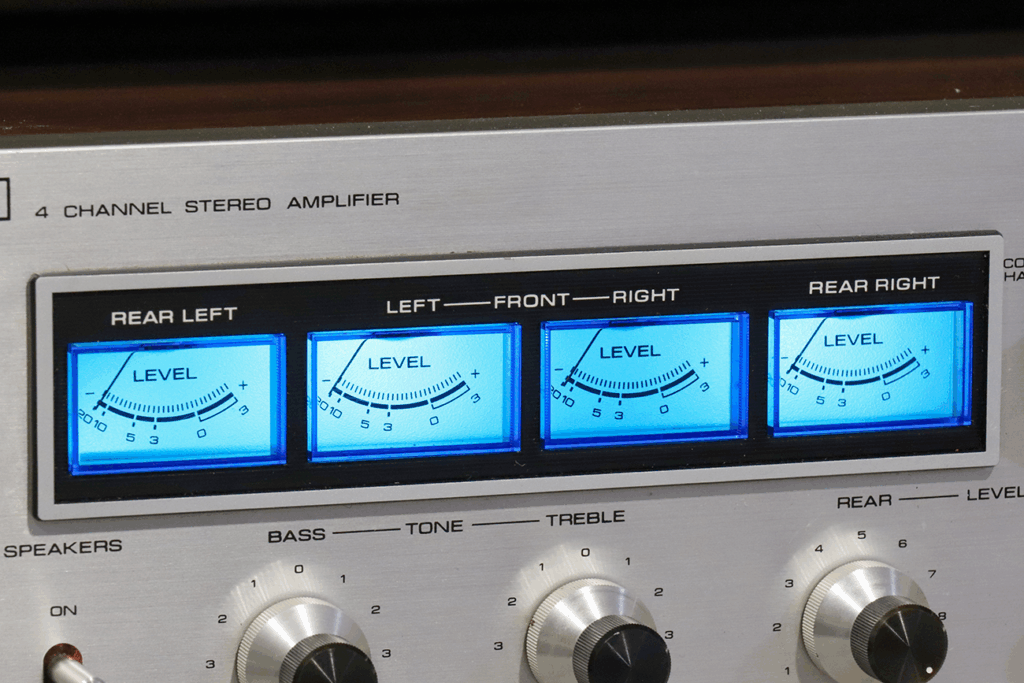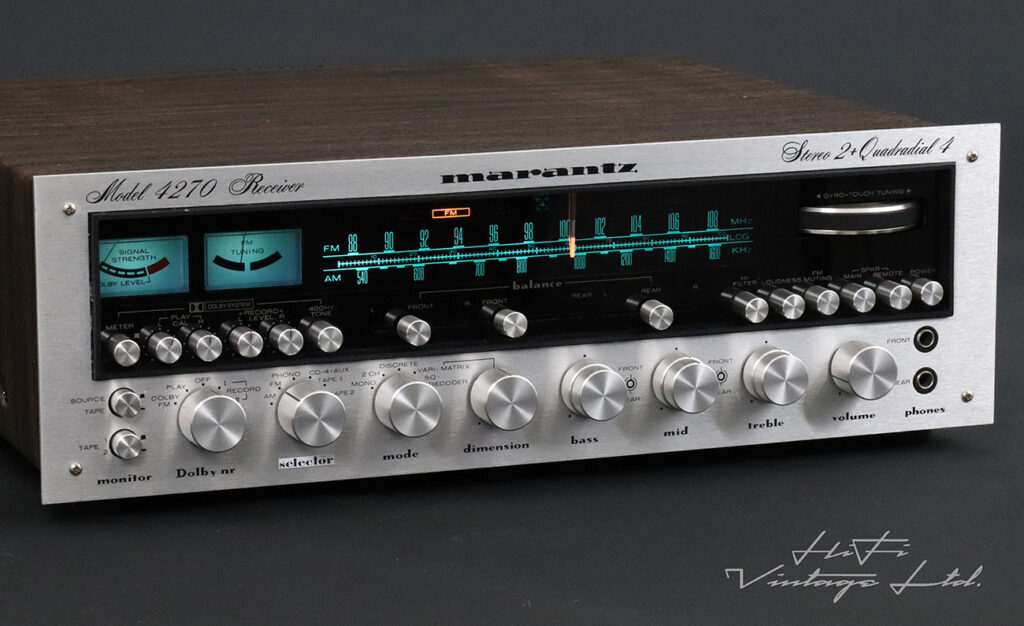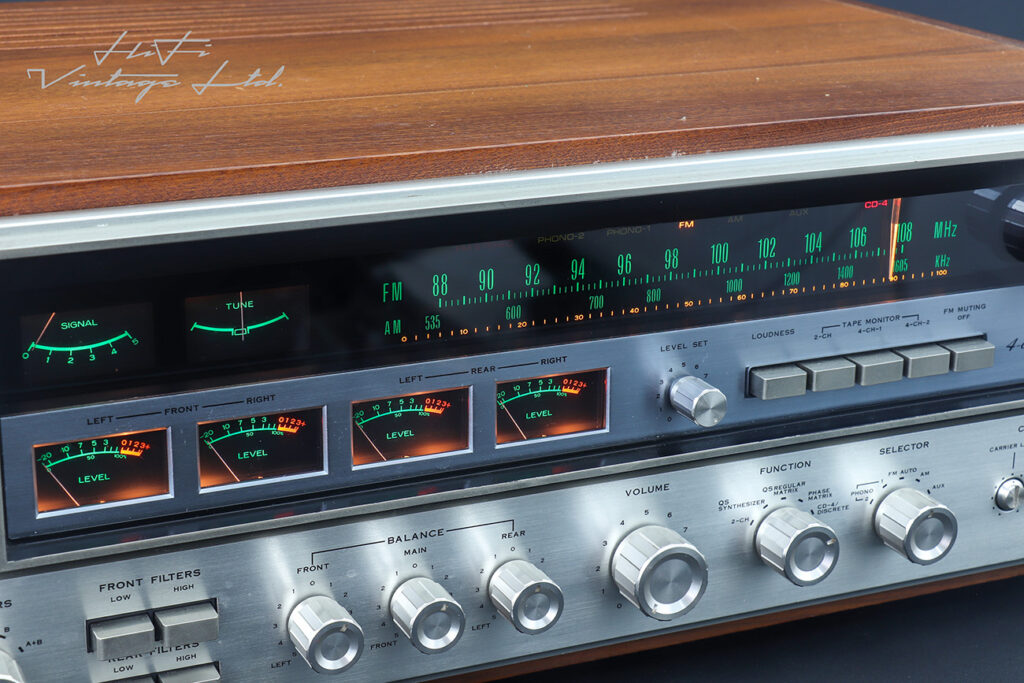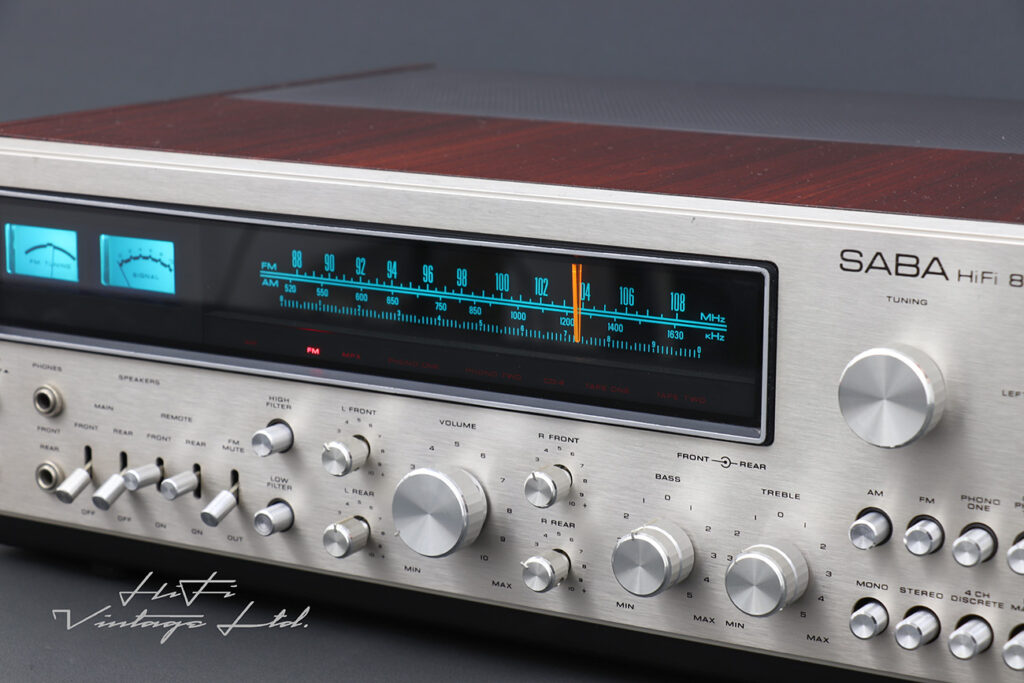What is a Quadrophonic System?
Quadrophonic sound was one of the most ambitious audio innovations of the 1970s. Unlike standard stereo (which uses two channels), quadrophonic systems use four independent audio channels, placing speakers in all four corners of the room. The result? An immersive, surround-like experience that was designed to put listeners right in the middle of the music.

A Brief History
Quadrophonic systems first appeared in the early 1970s, as manufacturers sought to push the boundaries of home audio. Brands like Sansui, Pioneer, Sony, JVC, Akai, and Marantz all introduced their own quadrophonic equipment. The technology was available across several formats, including vinyl records (LPs), reel-to-reel tapes, and 8-track cartridges.
To deliver four-channel sound, various encoding systems were developed, such as SQ, QS, and CD-4. Each had its own method for separating and reproducing the channels, which unfortunately led to compatibility issues.
Why Didn’t Quadrophonic Systems Become Mainstream?
Despite the excitement and technical promise, quadrophonic sound never achieved mass-market success. The main reasons:
- High equipment and media costs: Quadrophonic amplifiers, decoders, and four matching speakers were expensive.
- Compatibility problems: Competing encoding systems (SQ, QS, CD-4) weren’t universally compatible, causing confusion for buyers.
- Limited music selection: Only a small portion of albums were released in quadrophonic format.
- Emergence of other technologies: Stereo continued to improve, and later, digital surround sound became the standard.
Who Collects Quadrophonic Systems Today?
Today, quadrophonic systems are highly prized by collectors and audio enthusiasts who appreciate their unique place in hi-fi history. These systems offer a rare listening experience and are a testament to the innovation of the analogue era. For some, restoring and listening to quadrophonic setups is both a hobby and a way to relive the golden age of audio experimentation.
How to Build a Vintage Quadrophonic Setup
If you’re interested in experiencing quadrophonic sound, here’s what you’ll need:
- Four matching speakers – ideally from the same model line for balanced sound.
- A quadrophonic amplifier or decoder – vintage models from Sansui, Pioneer, or Marantz are highly sought after.
- A compatible source – such as a quadrophonic LP (SQ, QS, or CD-4 encoded), a 4-channel reel-to-reel tape, or an 8-track quad cartridge.
- Proper setup and calibration – correct placement and balancing of all four speakers is crucial for the full effect.
Is It Worth It?
For most, quadrophonic systems are a fascinating curiosity – a glimpse into a time when audio engineers dreamed big. For collectors, they’re a chance to experience music in a way that few people ever have. If you love vintage audio, a quadrophonic setup is a true conversation piece and an unforgettable listening experience.
Conclusion
Quadrophonic sound may not have changed the world, but it left a unique mark on the history of hi-fi. Whether you’re a collector, an audio enthusiast, or just curious about the evolution of sound, exploring quadrophonic systems is a rewarding journey into the heart of vintage audio innovation.





1 Comment
Zgadzam się to wspaniale wrażenia osłuchowe. Mam 2 zestawy quadro Jeden topolski amplituner Cezar a drugi to wzmacniacz JVC jako źródła dźwięku wykorzystuje BDP Oppo 93 z analogowymi wyjściami audio i japonskie wydania płyt SACD w wersji 4.0 (np Santana M. Davis ) Pozdrawiam Andrzej Niwiński